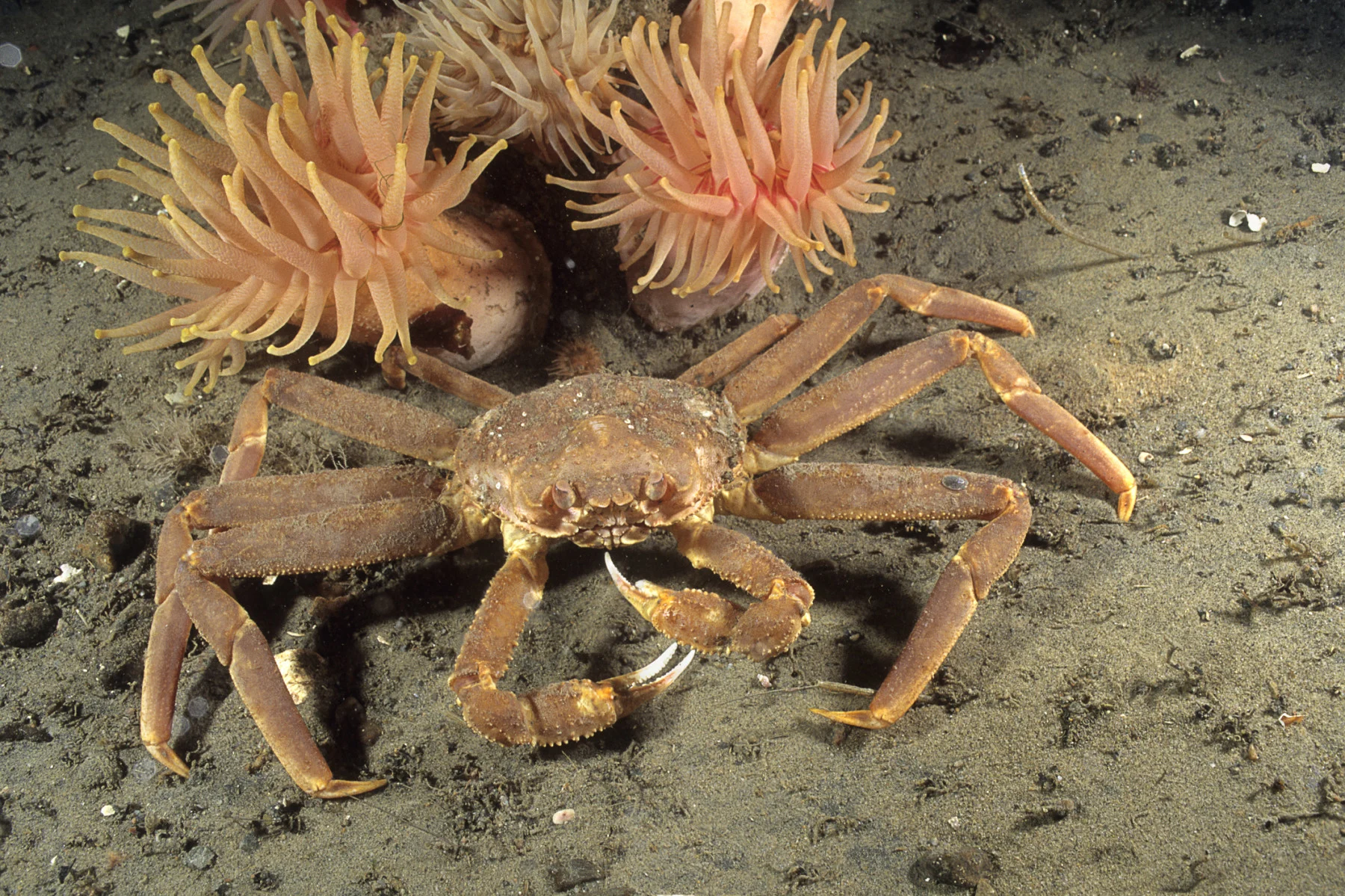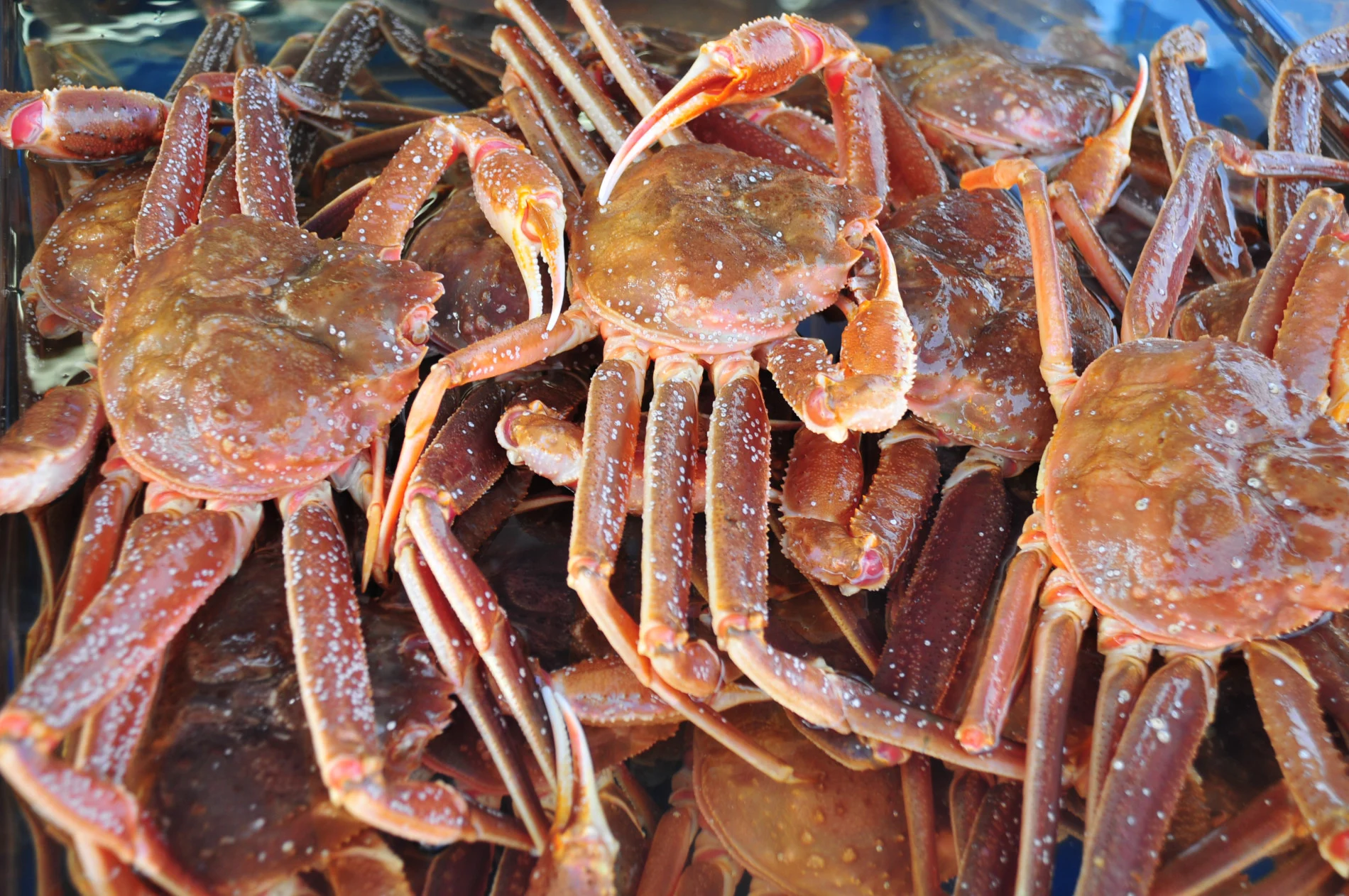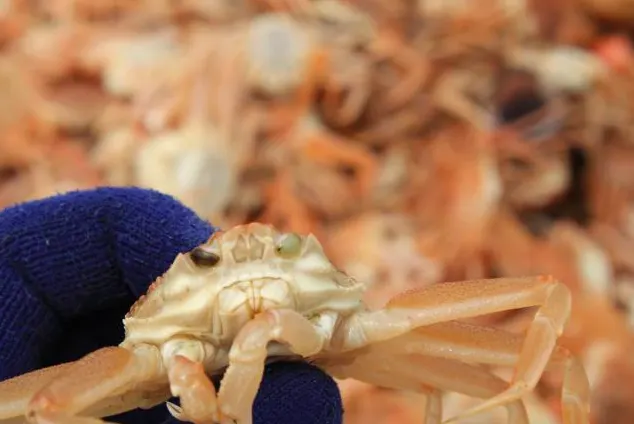
Billions of snow crabs near Alaska have disappeared. What's going on?
Climate change, overfishing, and bycatch issues are resulting in a novel case within the fisheries sector — a concerning occurrence that is expected to become more prevalent in the coming years.
Alaska snow crabs live in the frigid ocean waters near the coast of Alaska where lucrative harvests take place each year, with the commercial landings of Alaska snow crab in 2020 valued at over $101.7 million USD.
However, this sector screeched to a halt when, for the first time in history, the Alaska Board of Fisheries and North Pacific Fishery Management Council cancelled the 2022-2023 snow crab harvest due to concerning low population levels. The Bristol Bay red king crab harvest was also cancelled for the second year in a row.
The snow crab population has plummeted from eight billion in 2018 to just one billion in 2021, according to Benjamin Daly, a researcher with the Alaska Department of Fish and Game, in an interview with CNN.

Snow crabs in a fish market. (Tessa57/ iStock/ Getty Images Plus)
“Snow crab is by far the most abundant of all the Bering Sea crab species that is caught commercially,” Daly explained. “So the shock and awe of many billions missing from the population is worth noting — and that includes all the females and babies.”
Officials are citing overfishing as the cause for the cancelled harvest, but scientists note that several other significant factors are at play.
“We call it overfishing because of the size level. But it wasn’t overfishing that caused the collapse, that much is clear,” Michael Litzow, the Kodiak lab director for NOAA Fisheries, said to CNN.

A variety of crabs brought up in the net while out at sea. (Bobby Ware/ iStock/ Getty Images Plus)
The Arctic is one of the fastest warming regions in the world, which is impacting the relatively narrow snow crab habitat. The crabs spend time in cold waters that are slightly above 0°C, which protects them from predators that cannot tolerate such frigid conditions. But global warming is causing these cold regions to slowly disappear.
“A significant warming event in 2018-2019 contracted their habitat to barely even a fraction of the normal range, which pushed these juvenile snow crabs north. So they lost a critical habitat that protected them from predation,” Philip Loring, an ecological anthropologist and Associate Professor at the University of Guelph, explained to The Weather Network.
However, that is just one part of the story.
“It's entirely likely that climate change is playing a role. But just a role,” said Loring.
In addition to the warming ocean temperatures that are replacing coldwater habitats, Loring explained that snow crabs are unintentionally caught by other fisheries and become bycatch.
“In 2019 and 2020, we saw bycatch go up really high. These are the same years where the habitat that is protecting these crabs from predation is declining, so you have a double whammy,” he said.

Snow crab. (Alex Tugaw/ NOAA Fisheries)
Overfishing is also considered to be a major factor that has dramatically shrunk the species’ population size.
Fisheries regulate the amount of catch that they can take from a stock by determining the maximum sustainable yield. Extracting more catch than what the maximum sustainable yield outlines reduces the stock’s ability to replenish and could eventually result in a collapse where the population never recovers and faces extinction.
“In fact, the pattern looks very similar to what happened to Newfoundland with the cod collapse,” said Loring.
In July 1992 the Canadian federal government banned cod fishing on the East Coast after the Northern Cod stock collapsed due to overfishing. The cod industry in Newfoundland and Labrador had been in place for several centuries and the moratorium had devastating impacts on the region’s culture and economy. Around 30,000 jobs were lost, which is considered to be the largest layoff in Canadian history.
Although more than 30 years have passed since the moratorium went into effect, the Department of Fisheries and Oceans estimates that the Northern Cod stock will remain in the “critical zone” into 2024.
After the announcement of the cancelled snow crab harvest was issued on October 10, many took to Twitter to share their reactions.
When asked about the public’s emotional reaction to a species decline, Loring explained that the masses are unaware of the true status of certain stocks.
“I think that one of the reasons that people are so emotional and bothered by this is because they've been receiving messaging for the last decade that this fishery is sustainable. And to them, I think that means that this kind of thing wouldn't happen,” Loring explained.
“The messaging has been that this is responsible management — that's the language that they use in Alaska. And now you have a big collapse of a highly-valued, economically important species at a time when we're coping with inflation, high fuel prices, and economic uncertainty on a number of fronts. So I’m not surprised that people are so overwhelmed, aghast, upset, and concerned,” said Loring.
Alaska's crab fisheries in the Bering Sea are managed under the U.S. Federal Fishery Management Plan and according to NOAA Fisheries, “Alaska's fisheries are among the best-managed, most sustainable in the world.” The organization states that monitoring programs, data collection, and research are used to set sustainable catch limits and support local and national economies.
Despite the sustainable frameworks Alaskan governments and their collaborators have in place, some members of the scientific community had long seen this type of crisis coming.
“I was not surprised. I have felt and I know other fishery scientists who have felt that one of these years, there was going to be a high-profile fishery that went down this road. For many, including myself, snow crab was one of the possible contenders that could plummet first as a result of the intersecting issues of bycatch, climate change, and overfishing,” Loring said.
"Vanishing" lakes documented in the Arctic amid mass drying, scientists say
Loring states that the combined impacts of overfishing and climate change are a novel situation that will become more prevalent in the future and makes the current snow crab situation challenging because we do not have an existing model that can be used to solve the problem.
“Now we have sustainable fisheries that people have long thought to be sustainably managed using national maximum sustained yield, that are showing problems,” said Loring.
“I think this is a moment where we really have to reconsider the confidence, or perhaps overconfidence, of what constitutes sustainability in a world where the climate is changing and there's not going to be a steady, stable regime for any reasonable amount of time.”
Thumbnail image: Snow crab underwater in the St. Lawrence Estuary in Canada. (LaSalle-Photo/ iStock/ Getty Images Plus)







